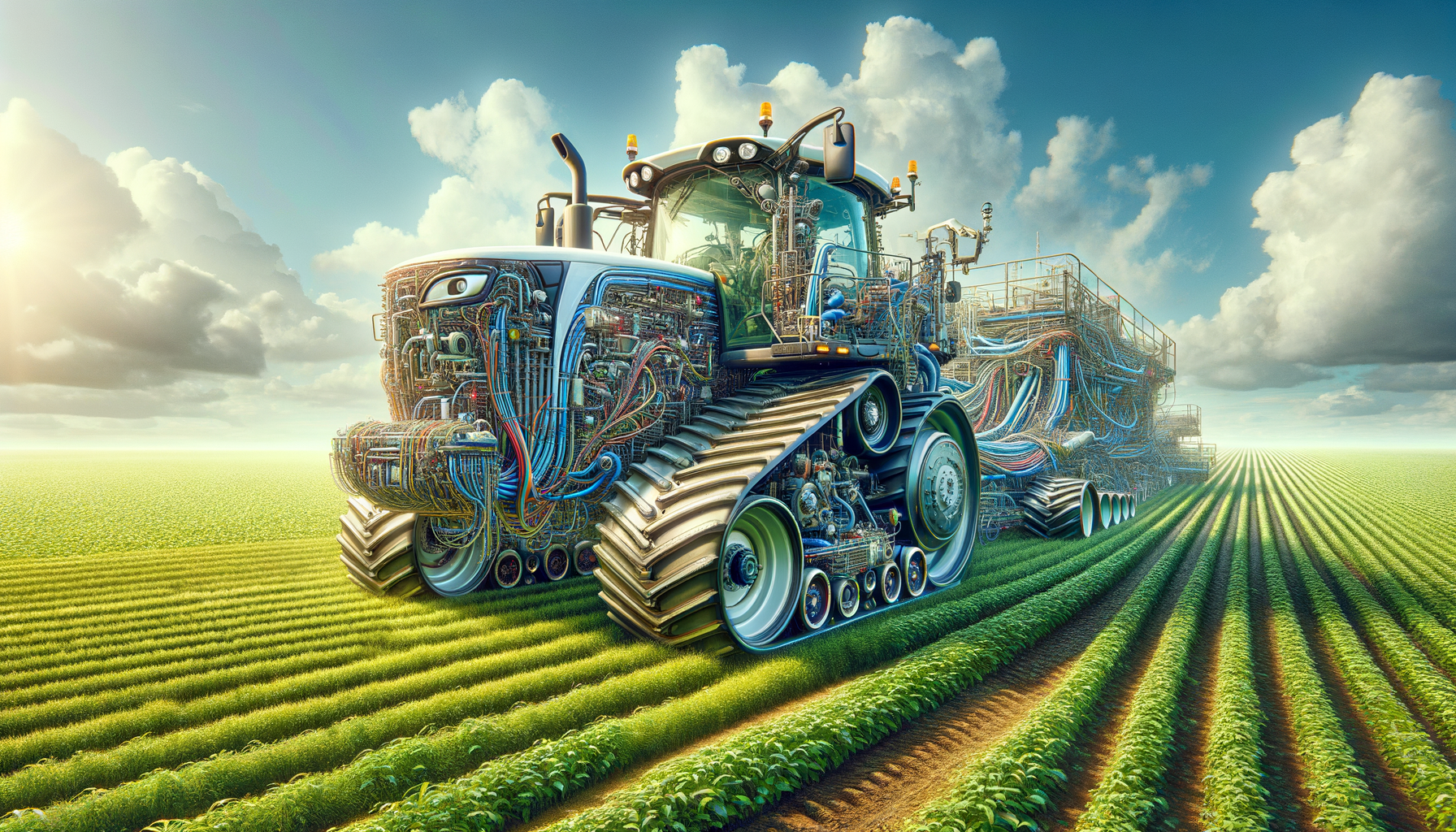Delving into the Realm of Tractors: The Silent Giants of Agriculture
The advent of tractors has transformed the landscape of agriculture, ushering in an era of unparalleled power and efficiency indispensable to contemporary farming.

The Evolution of Tractors: From Steam to Diesel
The history of tractors is a fascinating journey from the clunky steam-powered machines of the 19th century to the sophisticated diesel-powered giants of today. Initially, steam tractors, which emerged in the late 1800s, were cumbersome and limited in functionality. They were primarily used for threshing and heavy hauling, but their size and inefficiency hindered widespread adoption in agriculture. As technology advanced, the transition to internal combustion engines marked a pivotal moment. By the early 20th century, gasoline-powered tractors began to dominate the fields, offering greater mobility and ease of use.
However, it was the introduction of diesel engines that truly revolutionized tractor performance. Diesel tractors, renowned for their durability and fuel efficiency, quickly became the backbone of modern agriculture. They provided farmers with the ability to work larger plots of land with increased power and reduced operating costs. Today, the evolution continues with the integration of hybrid engines and alternative fuels, reflecting the ongoing commitment to sustainability in farming practices.
Technological Advancements: Precision and Automation
Modern tractors are no longer just mechanical workhorses; they are sophisticated machines equipped with cutting-edge technology. Precision agriculture has become a buzzword, and tractors are at the forefront of this movement. GPS technology allows for precise mapping and navigation, enabling farmers to optimize field operations with unparalleled accuracy. This technology minimizes overlaps and reduces fuel consumption, contributing to both economic and environmental benefits.
Automation has further enhanced the capabilities of tractors. Self-driving tractors are now a reality, allowing operators to focus on other critical tasks while the machine handles the plowing, seeding, and harvesting. These advancements not only improve efficiency but also address labor shortages in the agricultural sector. The integration of sensors and data analytics provides real-time insights into soil health and crop conditions, empowering farmers to make informed decisions and improve yield outcomes.
Environmental Considerations: Balancing Productivity with Sustainability
As tractors become more powerful and technologically advanced, the agricultural industry faces the challenge of balancing productivity with environmental sustainability. The environmental impact of diesel emissions has been a concern, prompting the development of cleaner, more efficient engines. Manufacturers are investing in research to reduce carbon footprints, exploring alternative fuels such as biodiesel and electric power.
Moreover, precision agriculture technology plays a crucial role in minimizing environmental impact. By optimizing resource use, farmers can reduce water and fertilizer consumption, leading to less runoff and soil degradation. These practices not only preserve the environment but also ensure long-term agricultural productivity. The move towards sustainable farming is not just a trend but a necessity, and tractors are integral to this transformation.
Economic Impact: Tractors as Catalysts for Agricultural Growth
The economic impact of tractors on agriculture cannot be overstated. By significantly increasing productivity, tractors have enabled farmers to cultivate larger areas, thus boosting food production and contributing to food security. The mechanization of agriculture has also led to a reduction in labor costs, allowing farms to operate more efficiently and profitably.
In developing countries, tractors are seen as vital tools for economic development. Access to mechanized farming equipment can transform rural economies by increasing agricultural output and providing employment opportunities. Microfinancing and cooperative ownership models have emerged to make tractors more accessible to smallholder farmers, further enhancing their economic impact.
Overall, tractors have been pivotal in transforming agriculture into a more efficient and economically viable industry, supporting global food demands and rural livelihoods.
The Future of Tractors: Innovations and Challenges
Looking ahead, the future of tractors is poised for further innovation. The integration of artificial intelligence and machine learning is expected to enhance autonomous capabilities, making tractors even more efficient and user-friendly. These technologies will enable tractors to adapt to varying field conditions and optimize operations without human intervention.
However, challenges remain. The high cost of advanced tractors can be a barrier for small-scale farmers, and the need for skilled operators and technicians is increasing. Additionally, the rapid pace of technological change demands continuous education and adaptation from farmers.
Despite these challenges, the potential for tractors to drive agricultural innovation is immense. As the demand for sustainable and efficient farming practices grows, tractors will continue to play a central role in shaping the future of agriculture, ensuring that the silent giants of the fields remain indispensable to global food production.